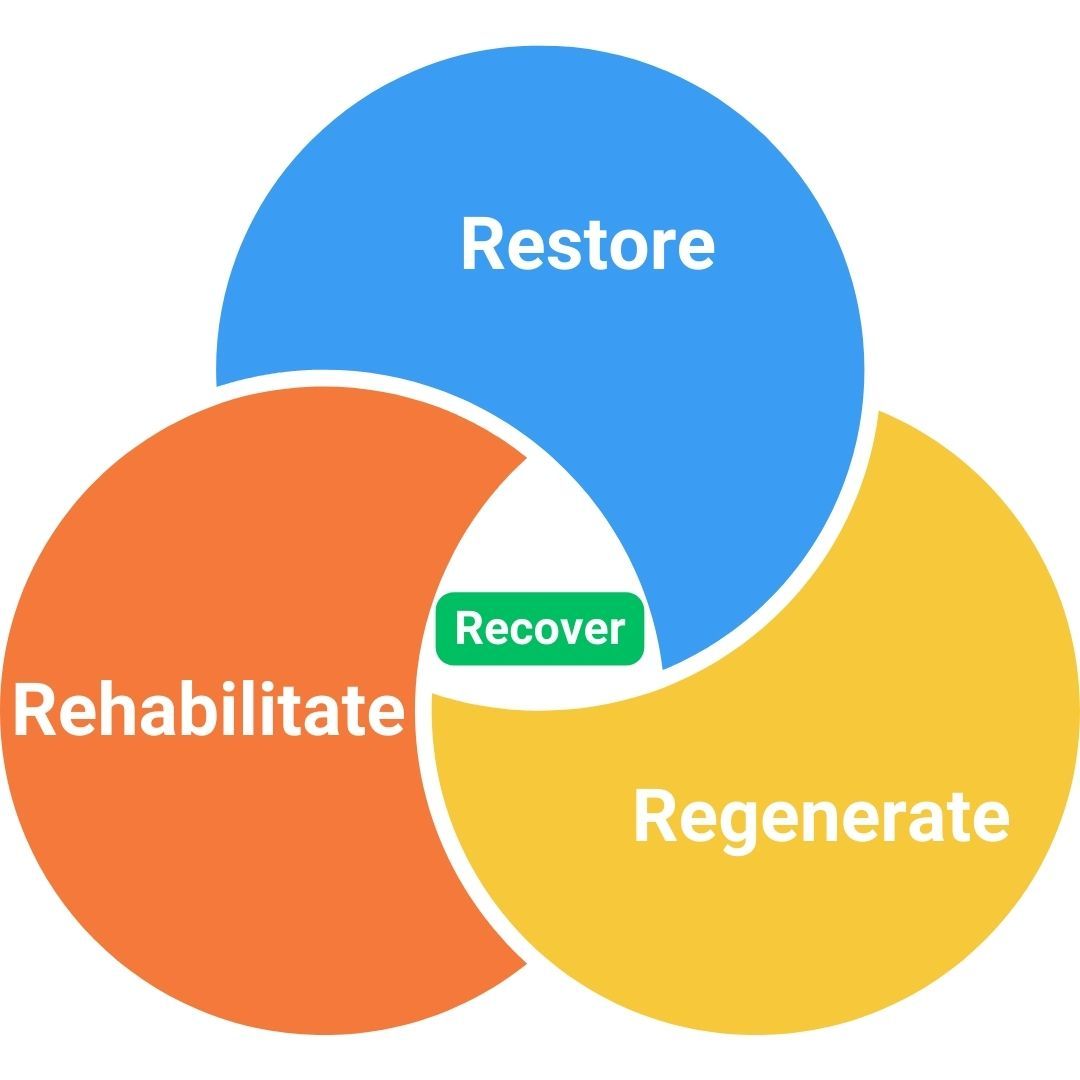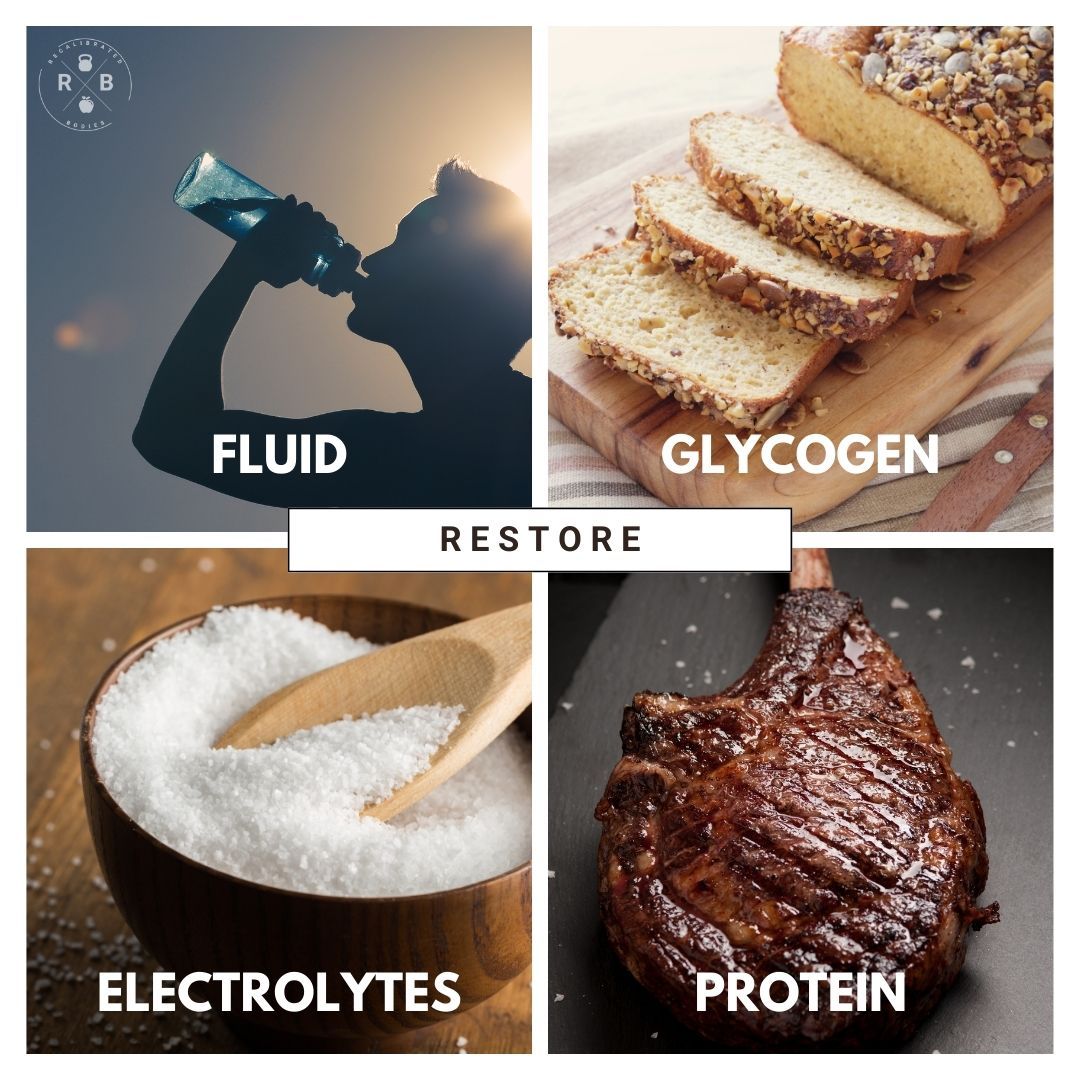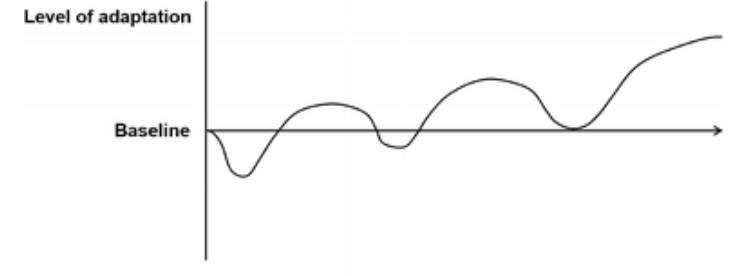What matters more; training hard or recovering well? Everyone puts their focus on training, but so many leave so much of their gains on the table by neglecting their recovery. Training is the stimulus to improve your fitness and build muscle, but your ability to recovery is what dictates how successful you are at actually making these gains. Getting smart with your training starts with optimising your recovery. To maximise your training recovery, you need to follow the three Rs:
- Restore
- Regenerate
- Rehabilitate

Restore
This is the phase that tends to get missed the most by most people – restoring what the body lost from training or competition. Many think that once they leave the gym or get back home from their run, they’ve done everything they need to do to get fitter and healthier. WRONG! The first couple of hours after a workout are the most important for starting the recovery process, and it begins by replacing the fuel and fluid that were depleted during exercise and starting the repair and growth process.
Fluid
Long and intense training can result in a lot of fluid and electrolytes being lost by the body. Sweat can result in as much as 5% of the body’s fluid stores lost. Dehydration as small as 2% has been shown to reduce performance in strength, power, and endurance, and 5% can result in a reduction in endurance performance of up to 30%! If this lost fluid is not replaced, you will start your next training session in a dehydrated state and your performance will suffer.
Glycogen
Exercise requires the muscles of the body to do work, which costs the body energy. The body gets this energy from a mix of sources, but predominately from glycogen and fat. Glycogen is glucose (carbohydrates) stored in the muscle and liver and is much more limited than our fat stores. Long and intense exercise can easily deplete our body’s glycogen stores and low glycogen availability can significantly impair our performance. It can make us feel weak, tired, and unable to train for as long or as intense as when our glycogen stores are full. This makes it important for you to help restore our glycogen before your next training session. Consuming an adequate amount of carbohydrates after training, especially within the first few hours, will help to ensure your glycogen stores are full before your next training session.
Electrolytes
Long and intense exercise can also result in a considerable loss of key electrolytes, such as sodium. Sodium is important for the signalling of nerves and the contraction of muscles. A lack of sodium in our bodies can result in muscle cramps and fatigue, making it important to replace it after exercise.
Protein
Exercise can cause damage to the muscles and be a signal for growth. Protein contains amino acids, which are the building blocks of muscle, making it an extremely important nutrient for recovery. Consuming enough protein will help to ensure your body has enough essential amino acids to help repair and build muscle tissue and help to reduce your recovery time.

Regenerate
When we train or compete in something physically intensive, we tax certain systems of our body. These include the cardiovascular, muscular, metabolic, endocrine, and immune systems. Taxing these systems results in a reduction of their ability that must then be recovered. During recovery, the capacity of these systems returns to normal and if the recovery strategy is successful, it surpasses its baseline level to be able to handle more stress the next time. This is known as the Selye’s general adaptation syndrome (GAS) model.

This is how you get fit; by stressing the body’s systems through training and then giving it the time and resources it needs to recover and become better able to handle the stress next time. If you train too soon after a workout or intense bout of physical activity, the systems that were taxed do not have the opportunity to recover and they do not improve over time, resulting in a lack or even decline in fitness.

Rehabilitate
Hopefully, most of your training and competing doesn’t result in an injury, but if you do pick up an injury, it’s important to respect it and not train through it – you should never train through pain. Training through an injury can delay its recovery and result in further injury. Injuries typically take much longer to recover than the normal microdamage caused by training to muscles with most injuries taking weeks or months to fully heal. However, being injured doesn’t mean you need to stop training entirely either! In fact, training is more important than ever when injured, but you must train correctly to avoid making it worse or risk incurring another injury. A tailored training program can help you manage an injury and get you back to full training sooner.
Recover Better, Train Smarter, and Get Fitter with a Tailored Program
Getting fitter, faster, stronger, healthier, and more muscular shouldn’t feel like you’re killing yourself. By having your training and nutrition program tailored to you, you can perfect the balance of training and recovery to reach your goals in the most efficient and enjoyable way possible. Check out our programs to find the best program for your goals!








